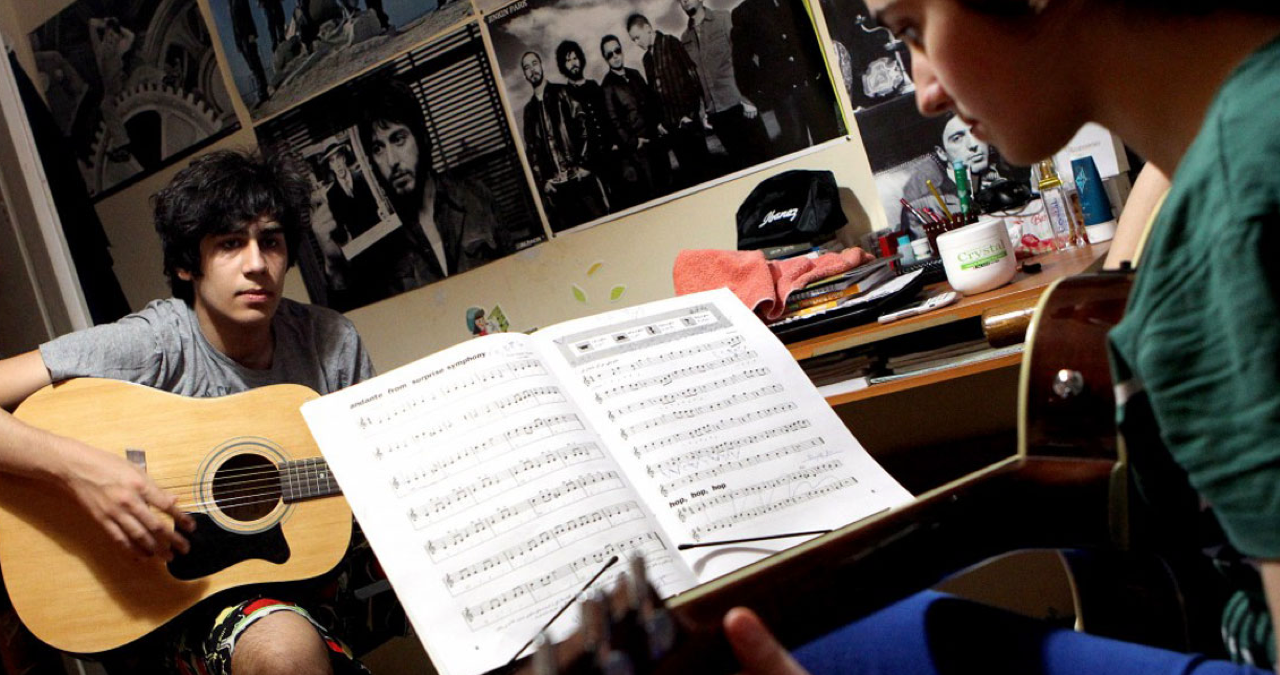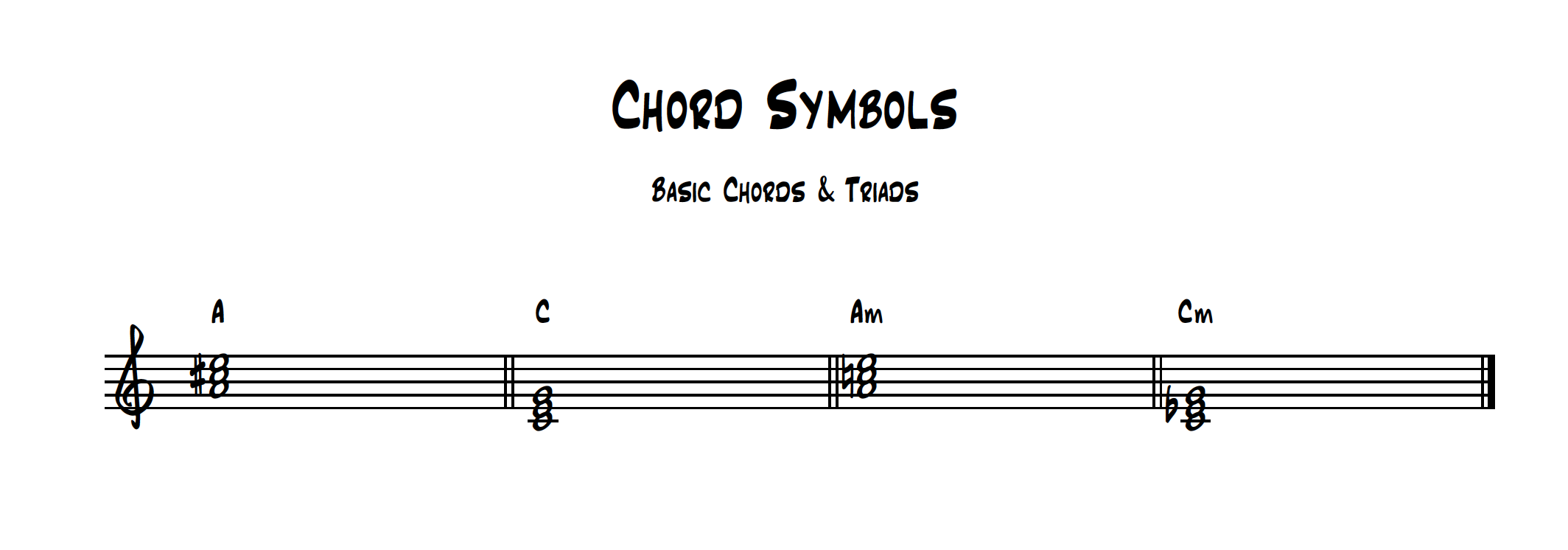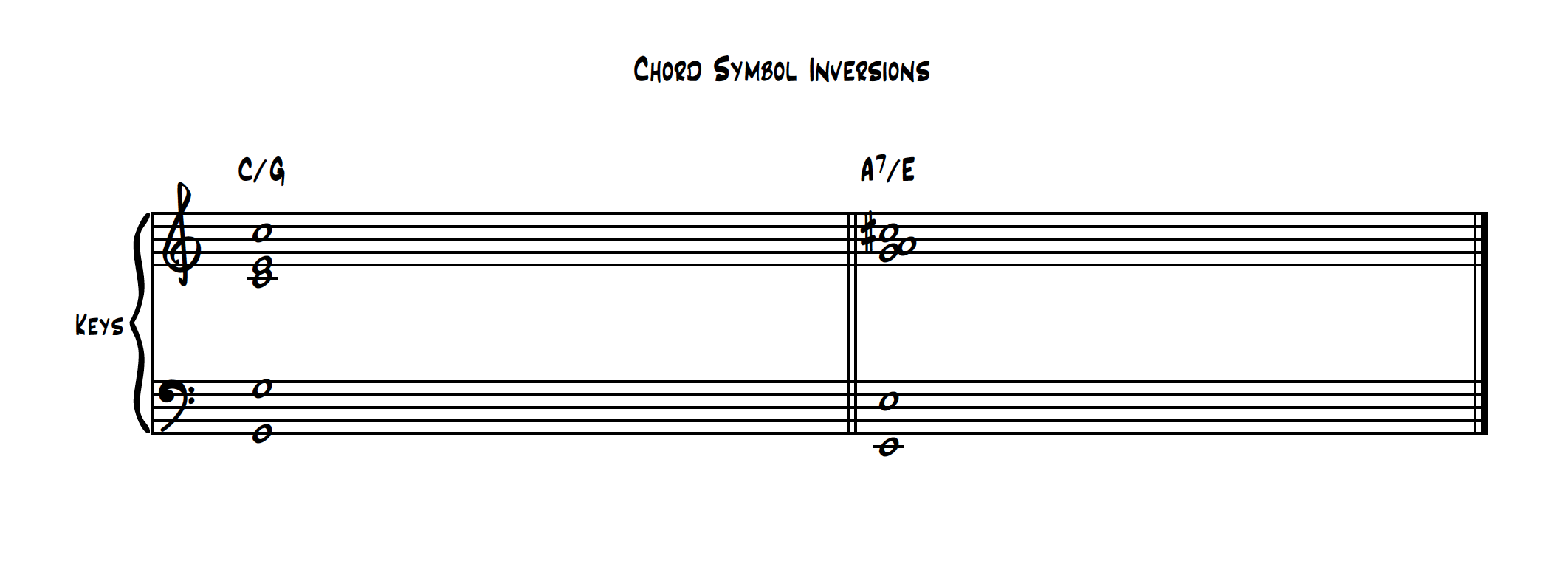How learning and understanding chord symbols can prove a major benefit for sharing your musical ideas
Chord hieroglyphics can take several forms. We unravel the mysteries of one of the most symbolic and common examples

If you work with other musicians, you may well have been confronted by the scenario where you need to quickly establish the chords of your song and relay the information to other musicians or band members. Thankfully, there’s a simple language just for this purpose. It’s time to embrace the chord symbol.
Your experience with chord symbols will likely be informed by the instrument that you play.
Notable devotees include guitarists, who sometimes use a symbol format known as ‘tab’ (an abbreviation for tablature.) These symbols are designed to inform a guitarist where to place their fingers on a fretboard. Tab is unique to guitar-based instruments.
This is not our topic du jour, so we are keeping our brief wider, working with symbols that can be useful to all instrumentalists playing a harmonic instrument, particularly in a band or song context.
One of the wonderful things about the chord symbol, is that you can just scribble it on a piece of paper - tah-dah - instant song form!
But in the context of written music, with a melody, the symbol is usually written above the musical stave. You can also write more than one chord per bar, writing the symbol above the point in the bar where you want the chord to change.
So let’s begin by discussing major and minor chords, or triads.
Want all the hottest music and gear news, reviews, deals, features and more, direct to your inbox? Sign up here.
If you see a single letter, such as A or C, this would indicate a straight chord of A major, or C major respectively. However, placing a small ‘m’ after the chord name, denotes a switch to a minor chord. Hence Am or Cm becomes A minor or C minor.

Due to this simplistic concept, there is a drawback; there is no indication of which register to place the chord, so the voicing is left to the individual musician, to place their playing marque upon the chords within a song. At the very least, chord symbols act as a useful memory jogger.
Chord symbols can then be further expanded by adding extensions, such as a 7th.
In the context of a symbol, such as C7, the default extended note would be one tone below the chord name. In this case, C7 would consist of the triad of C, with a Bb included.
This is a hark-back to the days of jazz and blues, where the sound of this flattened 7th became standard. This also explains why we have to differentiate between this chord type, and the chord described as a major 7th.

When you see the symbol C maj7, the ‘maj7’ element is telling you to play the 7th which is one semitone below the chord name, which in this case is a B natural.
It’s so named because it’s the 7th from a major scale, and not the more usual flattened variety, associated with the blues.
This becomes slightly more complicated with a chord such as Cm Maj7; the basic triad here would be a chord of C minor, however we are also being instructed to add the Maj7, or the note B.
You can continue to add chord extensions as liberally as you like, although many of the more elaborate extensions tend to be rarely used in rock or pop. You’re less likely to see 9ths, 11ths or even 13ths!
One device that can be indispensable, especially for the bass player in your unit, is the indication of the note required in the bass. Adding this information to a chord symbol is very simple, but it does take some practice to quickly understand while playing, particularly if you're reading a chord chart for the first time.

A symbol such as C/G can be broken down into two elements; the first symbol ‘C’ relates to the required chord, in the usual way. The addition of the ‘/G’ element, tells us that we want a chord of C, but with a bass note of G. We verbally describe this as ‘C over G’.
While we are providing what could be described as a bluffers-guide-to-chord-symbols, it's worth noting that our literal translations here are regarded as the most common examples of their usage.
As is so often the case with music, the language can slightly alter, depending on the style of musician you are working with.
If you find yourself working with musicians who lean more towards jazz, the same rules apply, but the visual descriptions can sometimes be a little different.
The rock derivation of chord symbol is arguably the most common, being at the more simplistic end of chordal business, so here are a few other iconographic examples that you might come across.
If you see a symbol such as C- this does not relate to a bad school report!
The minus sign is often used by jazz musicians to indicate a minor chord, so this would be a chord of C minor. On rare occasions, jazz musicians might use lowercase lettering to indicate minor keys as well, although this can lead to complications and confusion, depending on how big the chord font is!
Another common example relates to the description of a maj7th. This I can be indicated via the use of a triangle symbol. 'C∆' indicates C maj7, in a far more concise format.
Writing out a simple chord chart doesn't have to be complicated, but writing out guitar tablature can be more difficult, particularly for non-guitarists. Many score packages, such as Sibelius, will recognise a chord being used, from the notes in your music, and can even create guitar tab too! Exceptionally useful, if your guitarist prefers to talk ‘tab’!
Roland Schmidt is a professional programmer, sound designer and producer, who has worked in collaboration with a number of successful production teams over the last 25 years. He can also be found delivering regular and key-note lectures on the use of hardware/software synthesisers and production, at various higher educational institutions throughout the UK
You must confirm your public display name before commenting
Please logout and then login again, you will then be prompted to enter your display name.
